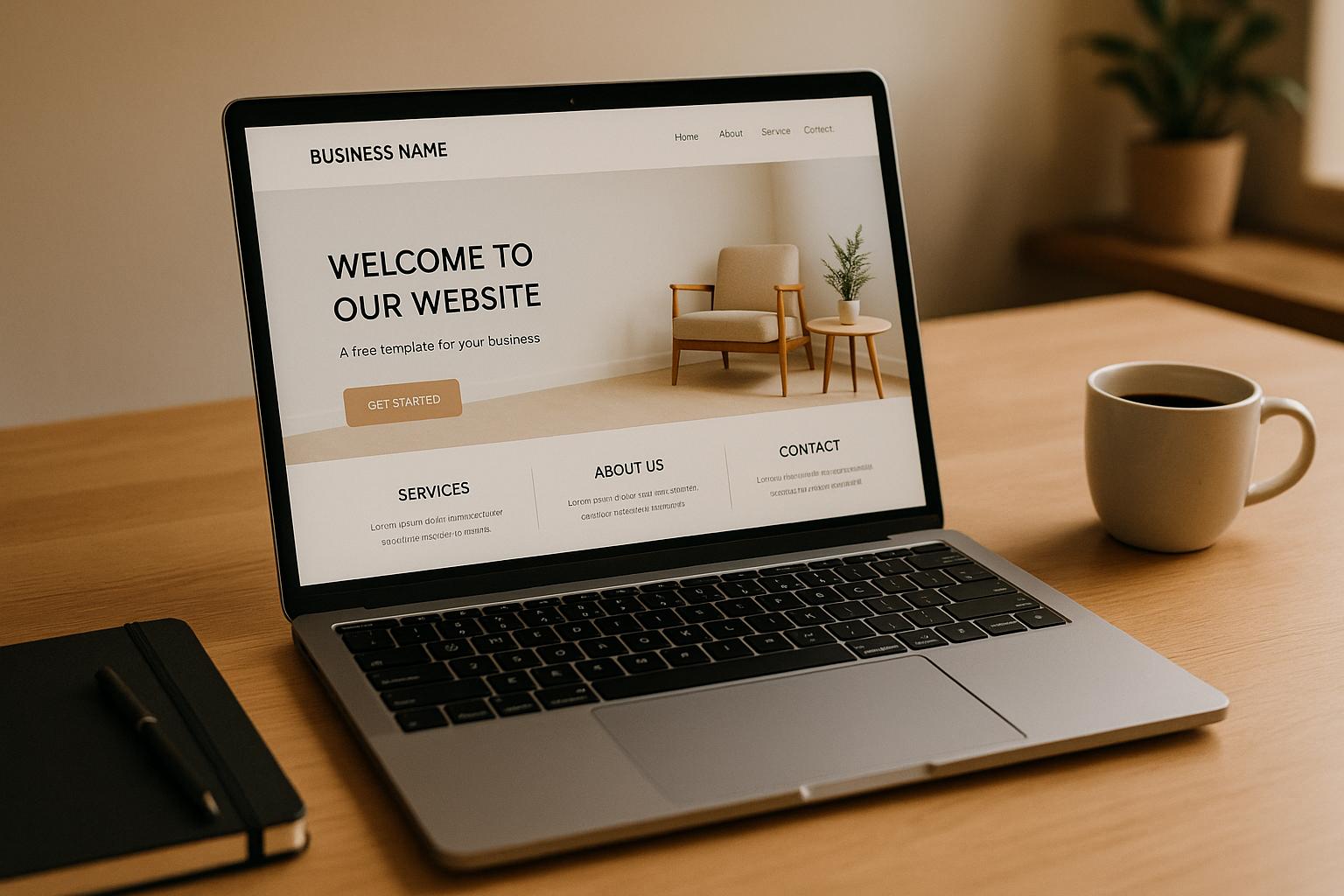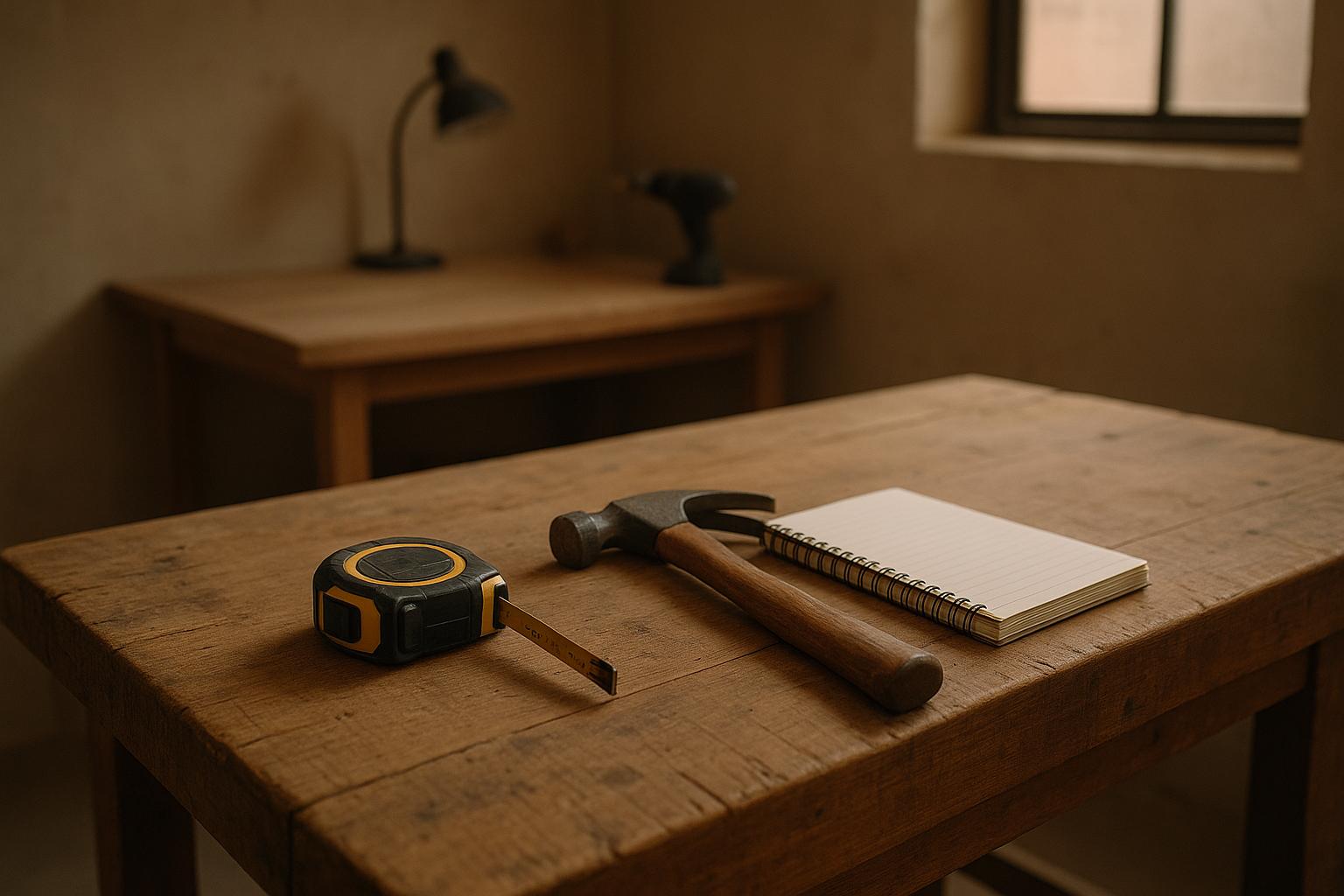
Starting a pressure washing business with less than $1,000 is possible and can be profitable. Here’s a quick summary of how to get started:
- Plan Your Business: Research local demand, choose services like driveway or patio cleaning, and create a $1,000 startup budget.
- Legal Setup: Get a business license ($25–$100), insurance (starting at $52/month), and an EIN (free).
- Buy Equipment: Start with a budget-friendly pressure washer like the Westinghouse ePX3500 ($159) and basic tools like safety gear and cleaning attachments.
- Marketing: Use free tools like Google Business Profile, build a simple website, and promote your services with low-cost strategies like yard signs and social media ads.
- Control Costs: Track expenses, set competitive rates (e.g., $0.20/sq ft for driveways), and focus on customer retention through referrals and loyalty programs.
1. Plan Your Business Basics
Understand Local Market Needs
To succeed in the pressure washing business, it's important to know what your local market needs. Start by identifying areas where your services are most likely to be in demand.
Research local demographics and property types. Focus on areas with single-family homes that have driveways and patios, commercial spaces with storefronts and parking lots, apartment complexes requiring regular maintenance, and industrial zones needing equipment cleaning. Take a drive through these neighborhoods and look for properties with visible dirt or buildup - these are potential customers for your services.
Choose Your Services
Decide on the services you’ll offer based on local demand and your initial budget. Residential jobs, such as cleaning siding, driveways, and decks, are a good starting point. You can also target commercial properties like parking lots and storefronts. If you want to stand out, consider offering specialized services like roof cleaning or graffiti removal. Once you’ve decided, create a budget to invest in the tools and resources needed for these services.
Manage Your $1,000 Startup Budget
Here’s how you can break down your $1,000 budget to cover the essentials:
| Expense Category | Cost Range | Suggested Allocation |
|---|---|---|
| Basic Equipment | $120–$3,100 | Around $600 |
| Legal Requirements | $50–$1,900 | Around $250 |
| Marketing Materials | $0–$5,000 | Around $100 |
| Initial Supplies | $20–$100 | Around $50 |
Focus on buying the essential equipment first and plan for upgrades as your business grows. To save money, use your personal vehicle initially instead of investing in a dedicated one, which could cost up to $35,000. Residential services are a smart starting point since they require less specialized equipment and are quicker to complete.
Pressure Washing Business Starter Kit | EVERYTHING You ...
2. Complete Legal Requirements
Here's how to handle the legal essentials for starting your business within a $1,000 budget.
File Business Papers
Make sure you have the right permits and licenses. A basic business license typically costs between $25 and $100. Specific requirements vary by state:
| State | Key Requirements |
|---|---|
| California | Requires a license from the Contractors State License Board, which usually needs at least 4 years of experience. |
| Michigan | A wastewater discharge permit from EGLE is necessary. |
| Other States | Generally, a standard business license costs between $25 and $100. |
Get Insurance Coverage
Insurance is a must to safeguard your business. NEXT Insurance provides budget-friendly options tailored for pressure washing businesses. Their "Basic" package includes:
- General liability coverage: $300,000 per occurrence
- Tools & equipment coverage: $3,000 per occurrence
- Commercial property coverage: $25,000 per occurrence
Most customers with NEXT Insurance pay between $52 and $236 per month.
Set Up a Tax ID
Make sure to get these tax IDs:
- Employer Identification Number (EIN): Free on the IRS website, used for federal tax purposes.
- Sales tax ID: Required to collect state sales tax.
Some cities have additional requirements for pressure washing businesses, so check your local government's website for details. Also, the EPA has strict rules on wastewater management. Understanding and following these regulations will help you avoid fines.
Taking care of these legal steps not only protects your business but also boosts your credibility - all while staying within your $1,000 budget. Up next, learn how to equip your business without overspending.
sbb-itb-08dd11e
3. Buy Basic Equipment
With your business setup and legalities sorted, it's time to gather the tools you need without breaking the bank.
Choose Your Pressure Washer
Here are some budget-friendly pressure washer options:
| Model | Specs | Price | Rating |
|---|---|---|---|
| Westinghouse ePX3500 | 2,500 PSI, 1.76 GPM, 25 ft hose | $159.00 | 4.6/5 (3,806 reviews) |
| Westinghouse ePX3100v | 2,100 PSI, 1.76 GPM, 20 ft hose | $109.00 | 4.7/5 (2,219 reviews) |
| Karcher K1700 | 2,125 PSI, 1.2 GPM, 20 ft hose | $104.99 | 4.3/5 (8,581 reviews) |
The Westinghouse ePX3500 stands out with features like anti-tipping tech, five quick-connect tips, high PSI, and a longer hose - perfect for commercial use.
Essential Tools to Add
Make sure to include these accessories:
- Safety gear: Safety goggles, durable gloves, and sturdy footwear
- Cleaning attachments: A surface cleaner attachment for large flat areas
- Basic supplies: Quick-connect nozzles, foam cannon, and cleaning solutions
Once you’ve got the basics, think about how to transport your gear efficiently.
Plan Equipment Transport
Here are some low-cost ways to move your equipment:
- Truck Bed Setup: Use a plywood mount and secure everything with ratchet straps.
- Trailer Option: Place equipment on wooden planks with rubber padding and strap it down tightly.
- Car Transport: Use rubber mats and secure compact units in your trunk to keep them from shifting.
These methods keep your equipment safe and secure until you’re ready to upgrade to dedicated transport solutions. With your tools and transport sorted, you’re set to move forward with your marketing efforts.
4. Start Low-Cost Marketing
Now that your equipment is ready, it’s time to attract customers without breaking the bank.
Build Your Online Presence
Start by establishing a strong online presence:
-
Google Business Profile
Create a free Google Business Profile. Include your hours, service area, photos, and customer reviews to make your business easy to find. -
Simple Website
Use platforms like Wix or Squarespace to create a clear, easy-to-navigate website. Highlight your services, showcase before-and-after photos, add a contact form, and include customer testimonials.
A study from Stanford University found that 75% of people judge a company’s credibility based on its website design. Keeping your profile and website updated can leave a great first impression.
Run Targeted Social Media Ads
Set aside a small amount of your budget for Facebook ads to boost your visibility in the local area. Keep your business page active by posting engaging content:
- Before-and-after photos
- Cleaning tips and advice
- Customer stories
- Seasonal promotions
Consistent posting not only builds credibility but also strengthens your connection with the local community.
Try Local Advertising
Don’t overlook affordable offline marketing strategies:
-
Yard Signs and Door Hangers
Leave yard signs at completed job sites and distribute door hangers in key neighborhoods. Add a QR code linking to your website for more engagement. These materials cost around $0.30–$1.15 each. -
Referral Program
Word-of-mouth is powerful - 92% of consumers trust recommendations from friends or family. Create a referral program offering discounts or service credits for both referrers and new customers. -
Local Partnerships
Partner with local businesses like real estate agents, property managers, and home improvement stores to grow your customer base.
Next, focus on managing your costs and fine-tuning your pricing strategy.
5. Control Starting Costs
Sticking to a $1,000 budget means every decision about spending and pricing counts.
Price Your Services
Set rates that are both competitive and attractive to customers. Research local pricing to see what others charge in your area. A common approach is charging per square foot (e.g., $0.20/sq ft for driveway cleaning). Start with lower rates to attract clients, and consider offering discounts to first-time customers to build trust and gather reviews. Bundling services can also encourage customers to choose more options by showing clear savings compared to buying them separately. Keep an eye on your expenses to ensure your pricing stays profitable.
Monitor Your Expenses
Carefully track all your costs. Break down key expenses like equipment maintenance, supplies, transportation, marketing, and insurance. Allocate specific portions of your budget to each category, based on local cost estimates. Use free business management apps to keep records organized, and tools like Joist's mobile estimating software to create professional quotes and manage spending. Staying on top of your expenses is essential for building a stable business.
Keep Your Customers
Loyal customers are the backbone of a steady income. Consider loyalty programs that reward repeat clients or offer incentives for referrals. Seasonal discounts for early bookings or referral rewards can help attract and keep customers. Build credibility by showcasing before-and-after photos and collecting reviews. For commercial clients, offer discounts on multi-service contracts to secure consistent work while growing your business.
Conclusion
Launching a pressure washing business for under $1,000 is entirely doable with thoughtful planning. The trick is managing your spending across equipment, legal requirements, and marketing efforts.
Focus on getting reliable equipment, securing the necessary licenses, and starting with simple but effective marketing. Choosing the right tools within your budget ensures you can begin operations without stretching your finances.
At this point, you've covered the basics: planning, legal compliance, equipment setup, and affordable marketing strategies. With limited funds, concentrating on focused, budget-friendly tactics will help you attract clients while keeping your initial costs in check.
Related posts
Get the newest tips and tricks of starting your business!


